When leading nature walks in winter, I like to point out that nature is not dead, only resting and waiting for the rebirth of spring. Even now, there are plenty of things to see and do in the winter woods.
On your next outdoor walk, try looking for signs of herbivores. White-tailed Deer (Odochoileus virginianus) are now feeding on the twigs and buds of trees and shrubs. They can eat up to 4 pounds (1.8 kilograms) a day! The twigs eaten by deer are ripped off the plant in a highly irregular way. In contrast, twigs eaten by the Eastern Cottontail Rabbit (Sylvilagus floridanus) are usually bitten off at a 45-degree angle, lower to the ground of course.


Deer will generally avoid twigs that are fragrant, such as Sassafras (Sassafras albidum). They will, however, eat supposedly “deer resistant” plants if they are really hungry. Why are some twigs fragrant? Not only does scent repel vertebrate herbivores, but these fragrant chemicals may have evolved as a defense against insects. It’s an evolutionary game of chess—plants create chemicals to repel predators, but sometimes predators co-evolve and are not harmed by them. Insects may even use these chemicals for their own defense.
We find many of these scents very appealing. Remember the scratch and sniff books for toddlers? Well, you can do that on your next walk. The trick is to identify those trees and shrubs that are scented. Just scrape a small section of the outer bark of a twig to get into the living cambium layer. Doing this on a few twigs will not harm the tree.
Do you like the smell of wintergreen? Try scratching and sniffing Black Birch or Sweet Birch (Betula lenta), as well as Yellow Birch (Betula allegheniensis). These trees have the chemical methyl salicylate, which is used to flavor many products, such as toothpaste and mouthwash. Because it is similar to salicylic acid, with aspirin-like properties, it is also used in topical rubs for muscle pain (think Bengay® cream). Originally, birch beer was also made from this bark. Most of these scents are now produced synthetically.
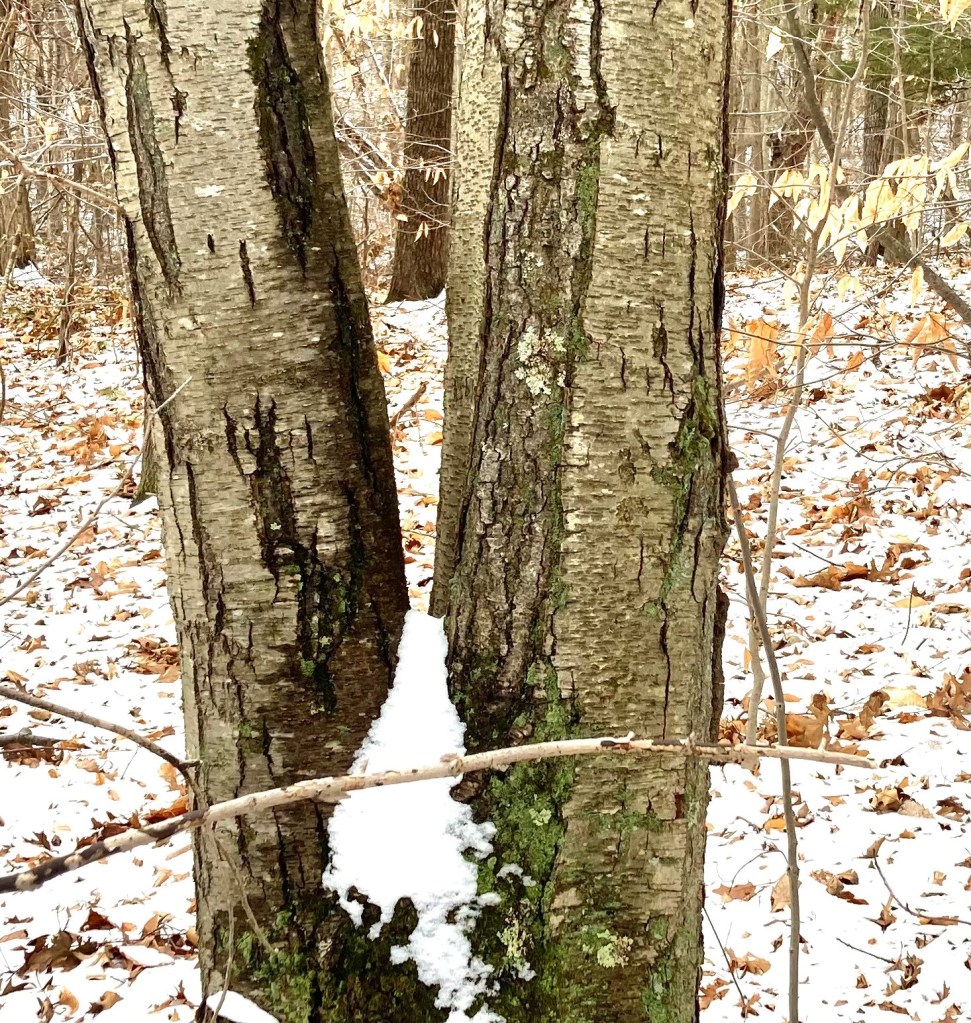

In the northeast, Black Birch is found growing on moist, acidic, wooded slopes, as well as in well-drained rocky areas. The mature bark is dark brown with many horizontal lenticels (pores that exchange gases) divided by many large vertical cracks. The twigs are very thin, smooth, and reddish-brown with sharp, pointed buds.
Yellow Birch twigs also have a wintergreen scent, although this is not as strong as in Black Birch. Yellow Birch twigs are slightly hairy in new growth and are grayer than Black Birch twigs. A mature Yellow Birch tree is easy to identify. Its shiny, yellow-bronze bark, also with dark lenticels, has distinctive peeling strips of curly bark. Yellow Birch grows in moist soils along cooler, north-facing slopes and stream banks.

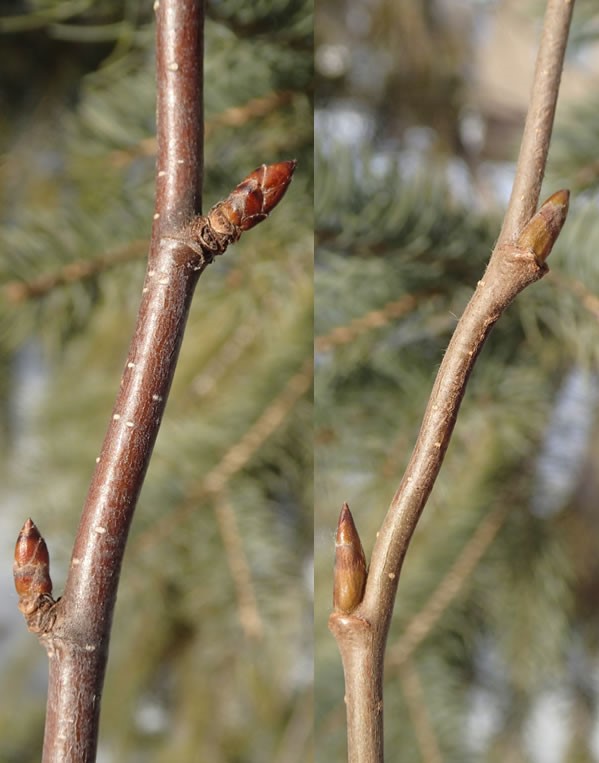
Photo by Peter M. Dziuk, Minnesota Wildflowers.
If you live in a city or near disturbed woodland edges, there is a good chance that the invasive Tree of Heaven (Ailanthus altissima) is nearby. Its smooth bark and very thick, stout branches (as thick as your thumb) are easy to spot. You’ll know it when you smell its twigs. They smell like burned or rotten peanut butter!

Do you remember the Sherlock Holmes story in which the famous detective smells bitter almonds on a victim’s breath and determines that the person was poisoned? Eastern native trees in the cherry family, such as Black Cherry (Prunus serotina), Pin Cherry (Prunus pennsylvatica), and Choke Cherry (Prunus virginiana), all have a pungent bitter almond odor when scratched. This is because the twigs and leaves contain cyanide! Please don’t ever eat these leaves and twigs.
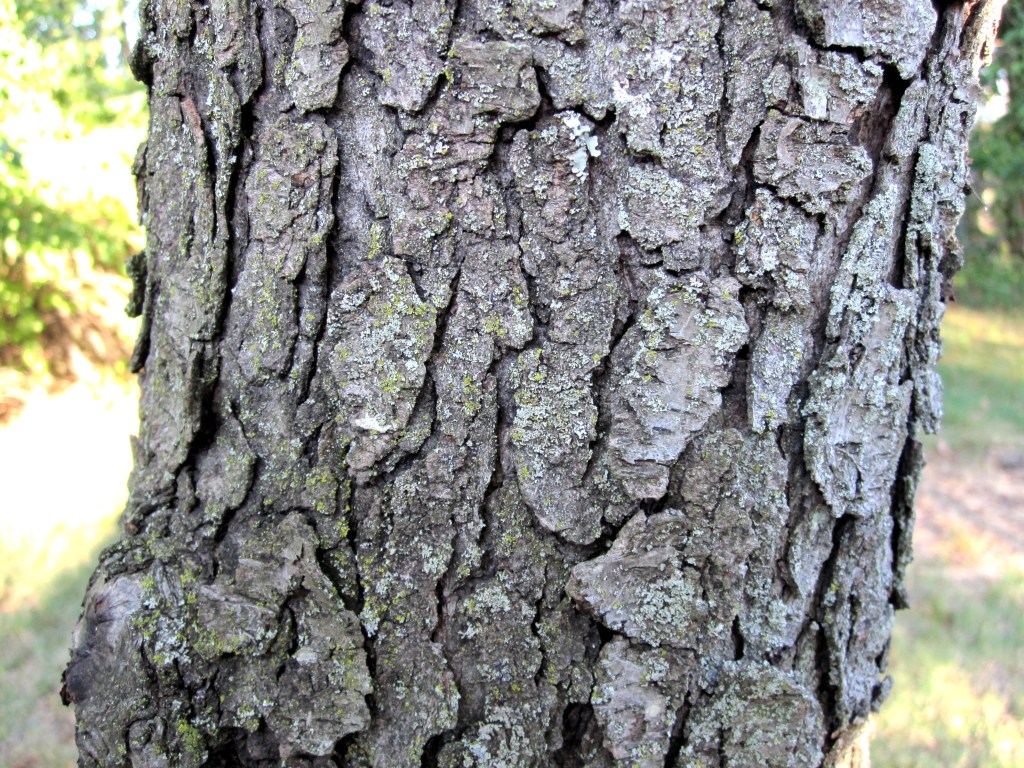

My favorite fragrances are from trees and shrubs in the laurel family, the Lauraceae, a tropical group with two members here in the north. Sassafras (Sassafras albidum) is found growing on dry, open woodlands and woodland edges and is a pioneer species in fields. Young trees are deep olive green with brighter green twigs. Sassafras tea was once made from its roots, but was found to contain safrole, which has been banned by the US Food and Drug Administration because of its possible carcinogenic effects. Its fragrance is citrusy and fruity. Some people think Sassafras twigs smell like Fruit Loops® cereal.

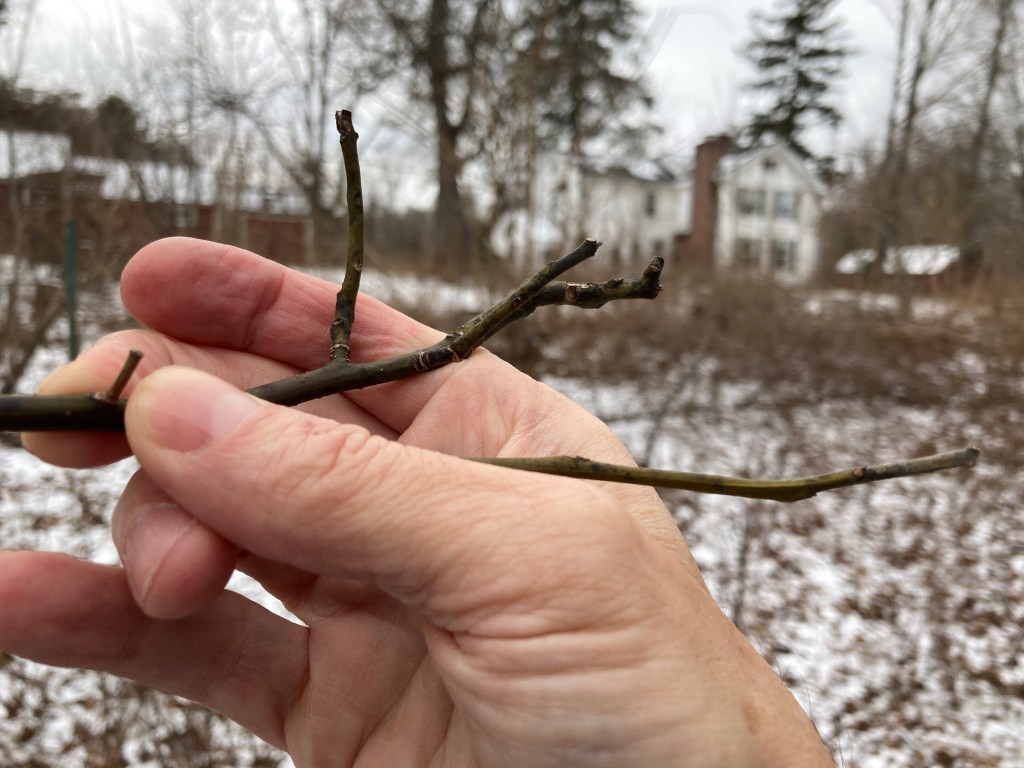
Spicebush (Lindera benzoin) is the other northern member of the laurel family. Spicebush grows in moist soils in wooded bottomlands and low swamps, and along streams. Its medium-brown twigs are smooth with characteristic round, reddish flower buds. When scratched, they are strongly aromatic, with a complex citrus, pepper, and pine scent.

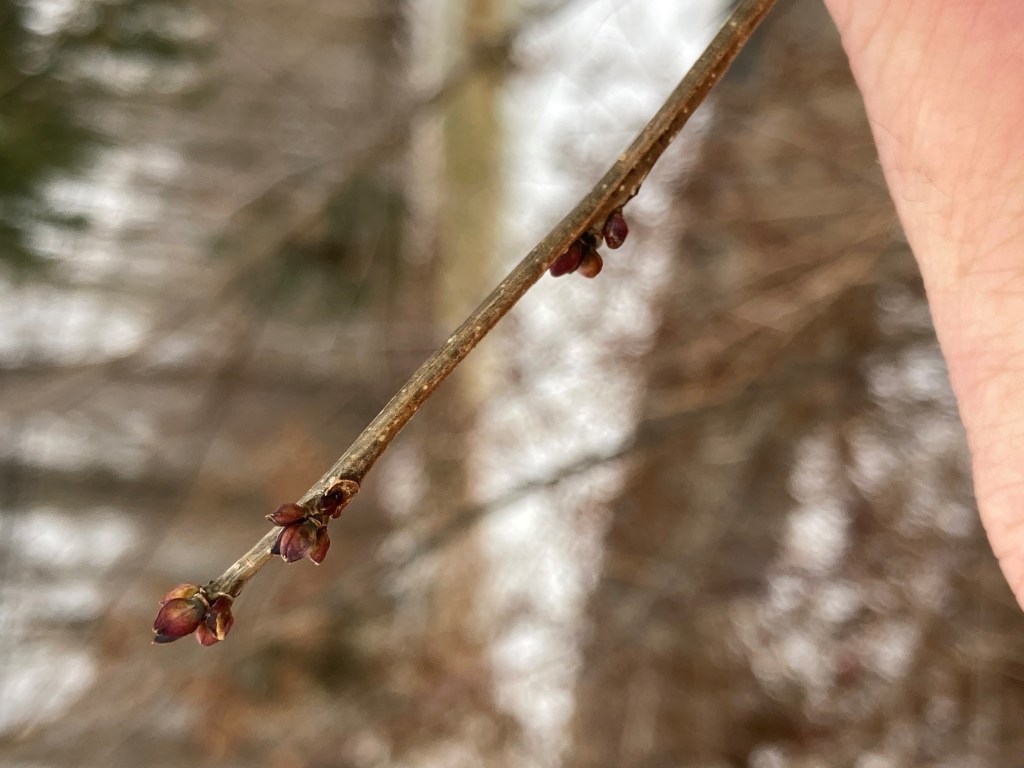
Although in the midst of our New England winter we all miss the delightful perfume of summer flowers, don’t think that our woodlands are devoid of scent. Take a fragrance walk and you’ll be pleasantly surprised.
We use hanging moth ball capsules to keep the deer away from plants we don’t want them to eat. Because we live in a wooded area, the deer are frequent visitors. Just don’t want them eating all the plants.
LikeLike
I agree Ellen. I have a problem with them too, as most people do. I have been planting small trees and they get hit hard. I try to use deer spray on them but need to refresh that. Maybe a deer fence some day. I don’t like how that looks though – the compound look….. I do plant catmint and mountain mint on edges of flower borders as deer don’t like to step on fragrant plants. Thx, Jim
LikeLike
Nice job, Jim. I really enjoyed that fragrant walk. Hang out in New York are you in the midst of the big snowstorm? Stay safe! Cheers, Wiz
LikeLike
Nice job, Jim. I really enjoyed that fragrant walk. Hang out in New York are you in the midst of the big snowstorm? Stay safe! Cheers, Wiz
(Oops, strange what the microphone picks up from the tv!)
LikeLike
Good article Jim. I am always surprised by all that nature has to offer but mostly goes unseen. Thanks!
LikeLike
Me too Tim, always something new to learn! Thx! Jim
LikeLike
EXCELLENT, Jim…many thanks!! Rick
LikeLike
Thx Rick! Many thx to you! Jim
LikeLike
Interesting, informative text with wonderful photos. Loved it! – Jeanne Musto
LikeLike